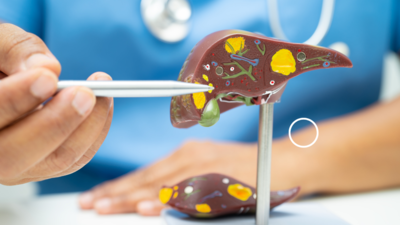Supermodel Bella Hadid recently shared her health update on Instagram post detailing about her struggles with Lyme disease, a tick-borne infection she caught in the year 2013. “Living in this state, worsening with time and work while trying to make myself, my family and the people who support me, proud, had taken a toll on me in ways I can’t really explain,” said Bella as she assured her fans she is doing okay and they do not need to be concerned about her. Lyme disease is a tick-borne infectious disease caused by the bacterium known as Borrelia burgdorferi and, less commonly, by Borrelia garinni, and Borrelia afzelli. It is transmitted through bite of black-legged ticks that carry the said bacteria. Not only Bella, but her mother Yolanda and brother Anwar Hadid suffer from the same disease and were diagnosed in 2012 and 2013 respectively. (Also read: ‘If you are struggling – it will get better’: Bella Hadid shares health update as she battles Lyme disease)

Dr Santosh Aggarwal – Senior Consultant, Internal Medicine at Marengo Asia Hospitals, Faridabad in an interview with HT Digital talked about what Lyme disease is, its symptoms, causes and treatment.
What is Lyme disease?
Lyme disease is a tick-borne infectious disease caused by the bacterium known as Borrelia burgdorferi. It primarily affects skin, nervous system, heart and joints. It is named after the town of Lyme, Connecticut, where it was first identified in children in 1976.
Causes of Lyme disease
Lyme disease is primarily transmitted to humans through the bite of black-legged ticks (also known as deer ticks) that carry the Borrelia bacteria. These ticks are commonly found in wooded or grassy areas, and they can latch onto humans and animals, transmitting the bacteria during their feeding process.
Symptoms of Lyme disease
Lyme disease symptoms can vary depending on the stage of infection and can mimic other illnesses, making it challenging to diagnose. The disease typically progresses in three stages:
Stage 1: Early localized stage
- It usually occurs within 3 to 32 days after a tick bite. Early symptoms may include:
- A painful red, circular rash with a clear centre (erythema migraines). The rash can expand over time, resembling a bull’s-eye pattern.
Preferred sites are thigh, groin and axilla.
Stage 2: Disseminated infection
The symptoms are:
- Rash
- Fever
- Chills
- Severe headache
- Neck stiffness
- Profound weakness
- Muscle and joint aches
- Enlarged lymph nodes
- Eye involvement
- Cough
Complications when Lyme disease is not treated
“If left untreated after several weeks or months a person can develop frank neurological abnormalities like meningitis (inflammation of membranes overlying the brain tissue), encephalitis, difficulty in walking known as ataxia and even facial paralysis. A number of patients develop irregular heartbeat (heart blocks), myopericarditis (inflammation of heart muscles and overlying membrane) and even heart failure. During this stage musculoskeletal migratory pain is quite common,” adds Dr Aggarwal.
Stage 3: Persistent infection
If Lyme disease remains untreated for several months or years, it can lead to more severe and long-term symptoms affecting the joints, nervous system, and other organs. These symptoms may include:
- Severe joint pain and swelling (frank arthritis)
- Memory, mood and sleep disorders
- Nerve pain (peripheral neuropathy)
It’s important to note that not all individuals with Lyme disease will experience the characteristic rash, and some may present with atypical symptoms.
Diagnosis and treatment
Early detection and treatment are crucial for a successful recovery from Lyme disease. There are methods which are used to diagnose the infection like-culture, PCR, ELISA serology. The primary treatment for Lyme disease is antibiotics. Commonly prescribed antibiotics include doxycycline, amoxicillin, and cefuroxime, ceftriaxone. The specific antibiotic and treatment duration will depend on the stage of the disease and individual factors.
For early-stage Lyme disease, a course of oral antibiotics is typically sufficient, while later stages may require intravenous (IV) antibiotics for a more extended period.
“If you suspect you have been bitten by a tick or are experiencing symptoms consistent with Lyme disease, it is essential to seek medical attention promptly. Lyme disease can be debilitating if left untreated, so early diagnosis and treatment are vital to prevent complications. Additionally, preventive measures such as wearing protective clothing, using insect repellent, and checking for ticks after outdoor activities can help reduce the risk of contracting Lyme disease,” concludes Dr Aggarwal.













































